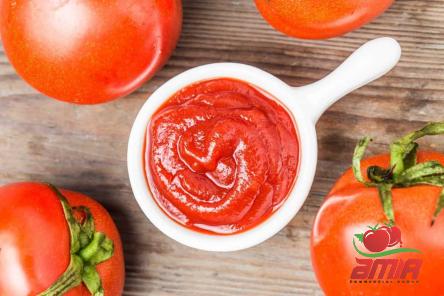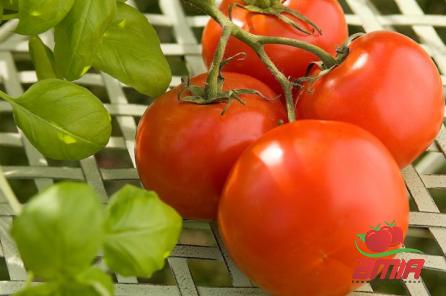Tomatoes are renowned for their rich, red hue, and when transformed into tomato paste, this color intensifies, creating a vibrant and versatile ingredient. In this comprehensive guide, we will explore the world of red tomato paste color, delving into its origins, properties, and culinary significance. From the science behind its vivid pigment to its role in creating visually appealing dishes, join us on a journey to discover the beauty of this iconic hue. ### The Science Behind Red Tomato Paste Color The striking red color of tomato paste is attributed to a group of plant pigments known as carotenoids. Carotenoids are responsible for the yellow, orange, and red hues found in various fruits and vegetables, with the most abundant carotenoid in tomatoes being lycopene. Lycopene is a potent antioxidant that not only contributes to the vibrant red color of tomatoes but also offers numerous health benefits. When tomatoes are processed into paste, the concentration of lycopene is significantly increased, leading to the intense red color that is characteristic of tomato paste. The processing methods involved in the production of tomato paste, such as cooking and evaporation, help to release and concentrate the pigments present in the tomatoes, resulting in the deep red hue that is synonymous with tomato paste.

.
### Variations in Red Tomato Paste Color While the general perception is that tomato paste is uniformly red, there can be variations in color depending on factors such as the variety of tomatoes used, growing conditions, and processing techniques. Different tomato varieties can exhibit slight variations in hue, ranging from a bright, true red to a darker, almost burgundy shade. The ripeness of the tomatoes at the time of processing can also impact the color of the resulting paste, with riper tomatoes typically yielding a deeper red hue. Additionally, the presence of additives or preservatives in commercial tomato paste products can influence the color, with some variations appearing more vibrant or slightly orange-toned due to the inclusion of ingredients such as citric acid or sugar. ### Culinary Significance of Red Tomato Paste Color In the world of culinary arts, color plays a crucial role in the presentation and perception of food. The vibrant red color of tomato paste not only adds visual appeal to dishes but also serves as a symbol of freshness and flavor. When incorporated into sauces, soups, stews, and other culinary creations, tomato paste imparts a rich red hue that signifies the presence of ripe, quality tomatoes. Chefs and home cooks alike appreciate the versatility of red tomato paste color in enhancing the visual appeal of their dishes. From classic Italian pasta sauces to hearty chili con carne, the deep red hue of tomato paste adds depth and complexity to a wide range of recipes. Its intense color serves as a visual cue for the bold, savory flavors that it contributes to dishes, making it a staple ingredient in kitchens around the world. ### The Influence of Red Tomato Paste Color on Consumer Perception In addition to its culinary significance, the color of tomato paste can also influence consumer perception and purchasing decisions. Studies have shown that the color red is associated with qualities such as freshness, ripeness, and boldness, leading consumers to perceive red foods as more appetizing and flavorful. The vibrant red color of tomato paste can evoke feelings of excitement and indulgence, making products that feature this hue more appealing to consumers. Packaging and labeling that highlight the deep red color of tomato paste can attract attention on supermarket shelves and convey a sense of quality and authenticity to shoppers.
..
### Utilizing Red Tomato Paste Color in Food Photography Food photography is an art form that relies heavily on color to create visually stunning images that capture the essence of a dish. The rich red color of tomato paste is a favorite among food photographers for its ability to add vibrancy and contrast to photos, making dishes appear more appetizing and enticing. When photographing dishes that feature tomato paste as an ingredient, photographers often emphasize the deep red hue by using lighting techniques that enhance the color saturation. Whether drizzled over pasta, spread on a pizza, or mixed into a simmering sauce, the intense red of tomato paste serves as a focal point in food styling, drawing the viewer’s eye to the heart of the dish. ### Exploring Cultural Significance of Red Tomato Paste Color The use of tomato paste in various cuisines around the world highlights its cultural significance and versatility as an ingredient. In Italian cuisine, tomato paste is a cornerstone of many traditional dishes, including pasta sauces, pizzas, and stews. The rich red color of tomato paste symbolizes the passion and warmth of Italian cooking, creating dishes that are as visually appealing as they are delicious. In Middle Eastern and Mediterranean cuisines, tomato paste is a key component in dishes such as kebabs, tagines, and soups, where its deep red color adds depth and complexity to the flavors of the region. The vibrant hue of tomato paste is celebrated in these cultures for its ability to brighten and enliven a wide variety of dishes, creating a visual feast that mirrors the diversity of flavors found in these cuisines. ### Sustainability and Red Tomato Paste Color In recent years, the food industry has seen a growing emphasis on sustainability and environmental responsibility, prompting manufacturers to explore ways to reduce waste and energy consumption in food production. The production of tomato paste is no exception, with efforts being made to minimize the environmental impact of processing tomatoes into paste. One approach to sustainability in tomato paste production involves utilizing the entire tomato fruit, including the skins and seeds, to extract as much value as possible from the raw materials. By incorporating these parts of the tomato into the paste, manufacturers can maximize efficiency and reduce waste, contributing to a more sustainable and environmentally friendly production process.
…
 ### Factors Affecting Red Tomato Paste Color Stability While the vibrant red color of tomato paste is visually appealing, maintaining its stability and preventing color degradation can pose challenges for food manufacturers and consumers alike. Several factors can contribute to changes in the color of tomato paste over time, including exposure to light, heat, oxygen, and pH fluctuations. Light exposure can cause the degradation of carotenoid pigments in tomato paste, resulting in fading or changes in color intensity. Storing tomato paste in opaque or dark-colored containers can help to protect it from light damage and preserve its vibrant red hue. Similarly, exposure to heat and oxygen can lead to oxidation of the pigments, causing discoloration or off-flavors in the paste. pH fluctuations can also impact the color stability of tomato paste, with acidic conditions helping to maintain the bright red color of the pigments. Proper storage conditions, such as refrigeration and airtight packaging, can help to prolong the shelf life of tomato paste and preserve its color quality for longer periods. ### The Role of Red Tomato Paste Color in Health and Nutrition In addition to its visual appeal and culinary significance, red tomato paste color is also linked to the health benefits of tomato-derived products. Lycopene, the carotenoid responsible for the red hue of tomatoes and tomato paste, is a powerful antioxidant with potential health-promoting properties. Research suggests that lycopene may help to reduce the risk of certain chronic diseases, such as cardiovascular disease, cancer, and age-related macular degeneration. The bioavailability of lycopene is enhanced when tomatoes are processed into products like tomato paste, making it easier for the body to absorb and utilize this beneficial compound. Consumers looking to increase their intake of lycopene and other antioxidants may choose to incorporate tomato paste into their diets as a convenient and flavorful source of these nutrients. Whether added to soups, sauces, or marinades, the rich red color of tomato paste signifies the presence of valuable antioxidants that can support overall health and well-being.
### Factors Affecting Red Tomato Paste Color Stability While the vibrant red color of tomato paste is visually appealing, maintaining its stability and preventing color degradation can pose challenges for food manufacturers and consumers alike. Several factors can contribute to changes in the color of tomato paste over time, including exposure to light, heat, oxygen, and pH fluctuations. Light exposure can cause the degradation of carotenoid pigments in tomato paste, resulting in fading or changes in color intensity. Storing tomato paste in opaque or dark-colored containers can help to protect it from light damage and preserve its vibrant red hue. Similarly, exposure to heat and oxygen can lead to oxidation of the pigments, causing discoloration or off-flavors in the paste. pH fluctuations can also impact the color stability of tomato paste, with acidic conditions helping to maintain the bright red color of the pigments. Proper storage conditions, such as refrigeration and airtight packaging, can help to prolong the shelf life of tomato paste and preserve its color quality for longer periods. ### The Role of Red Tomato Paste Color in Health and Nutrition In addition to its visual appeal and culinary significance, red tomato paste color is also linked to the health benefits of tomato-derived products. Lycopene, the carotenoid responsible for the red hue of tomatoes and tomato paste, is a powerful antioxidant with potential health-promoting properties. Research suggests that lycopene may help to reduce the risk of certain chronic diseases, such as cardiovascular disease, cancer, and age-related macular degeneration. The bioavailability of lycopene is enhanced when tomatoes are processed into products like tomato paste, making it easier for the body to absorb and utilize this beneficial compound. Consumers looking to increase their intake of lycopene and other antioxidants may choose to incorporate tomato paste into their diets as a convenient and flavorful source of these nutrients. Whether added to soups, sauces, or marinades, the rich red color of tomato paste signifies the presence of valuable antioxidants that can support overall health and well-being.










Your comment submitted.